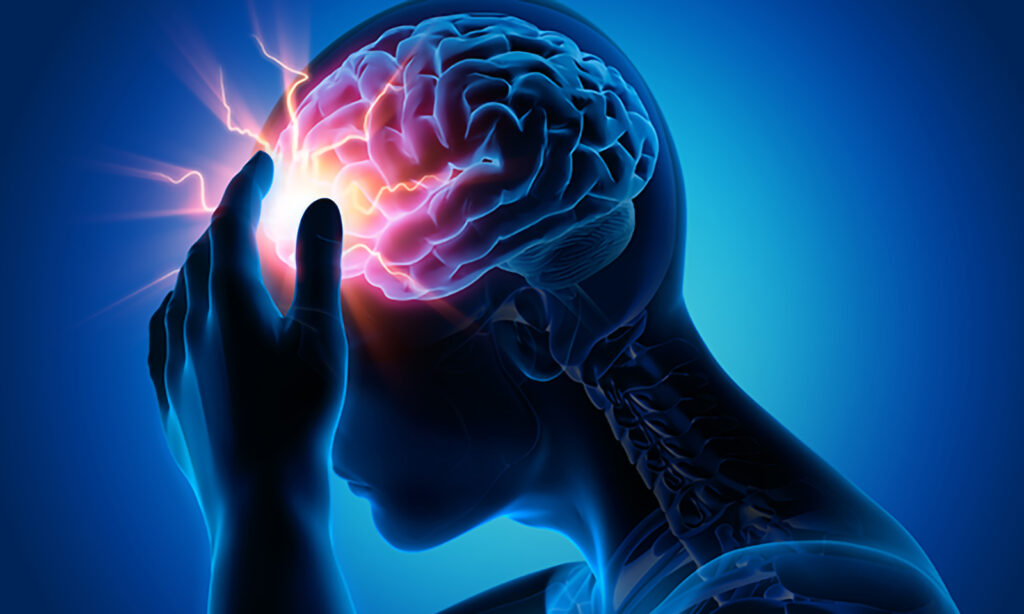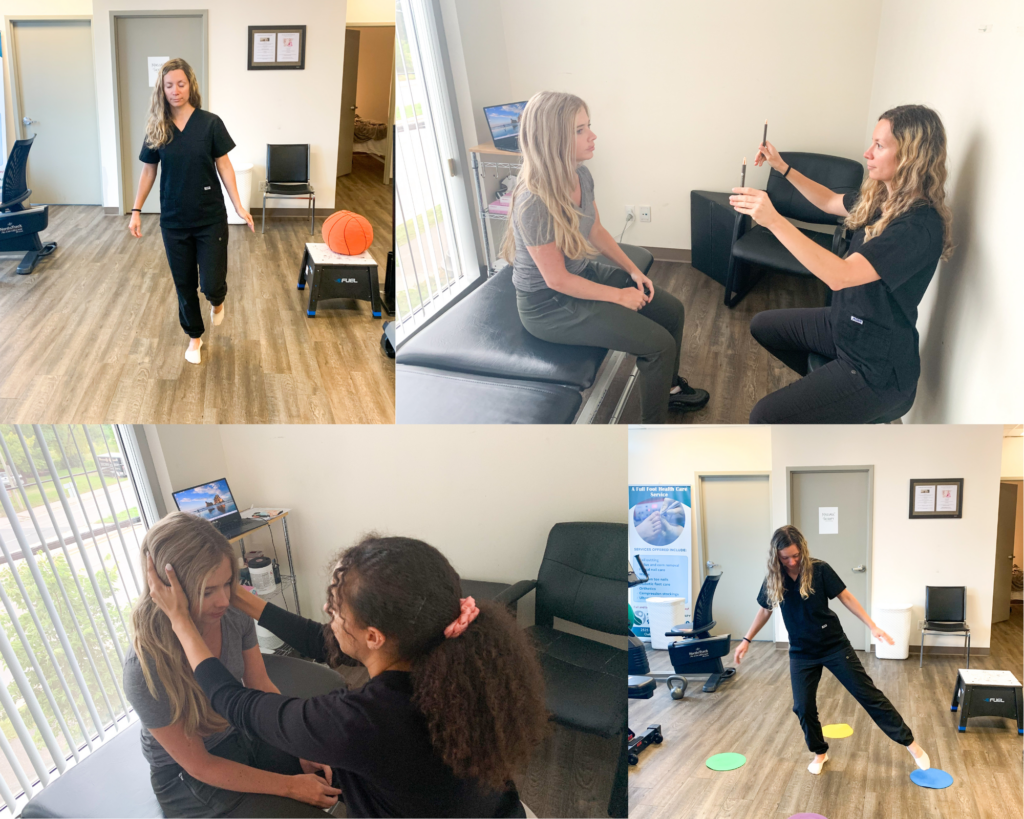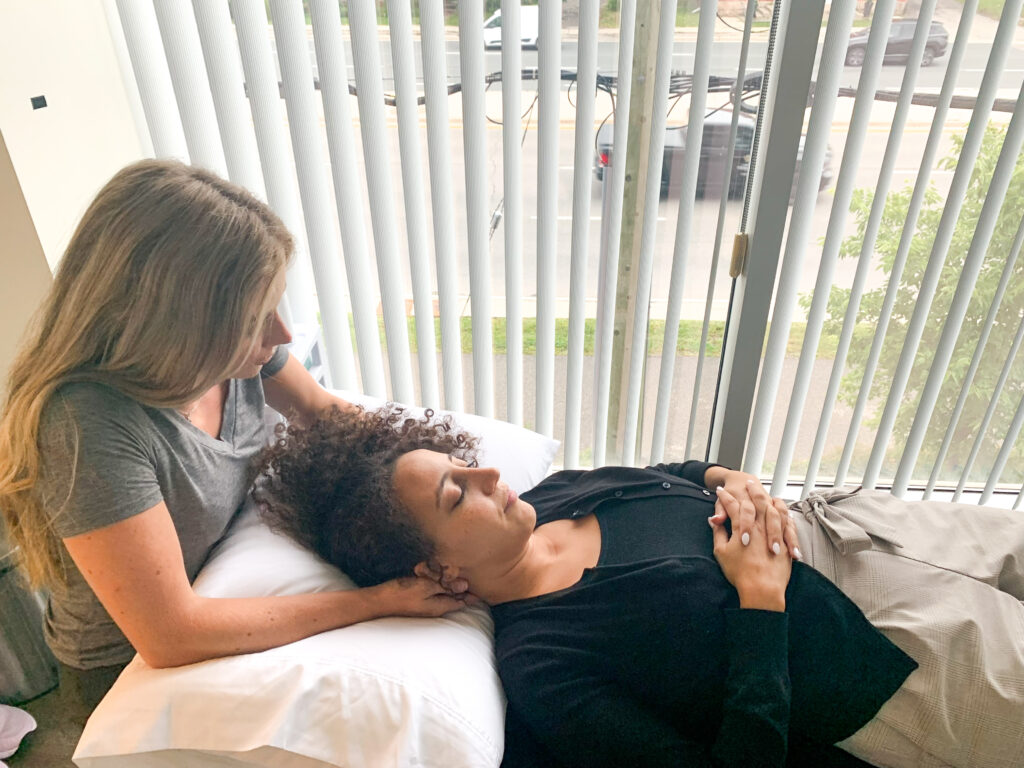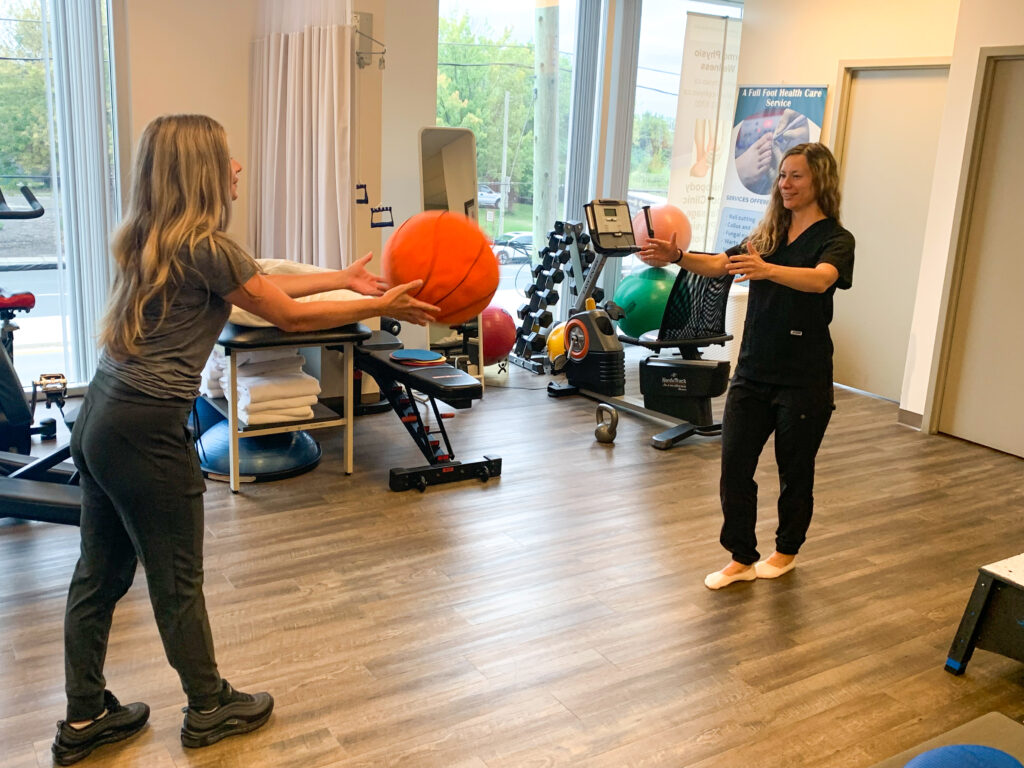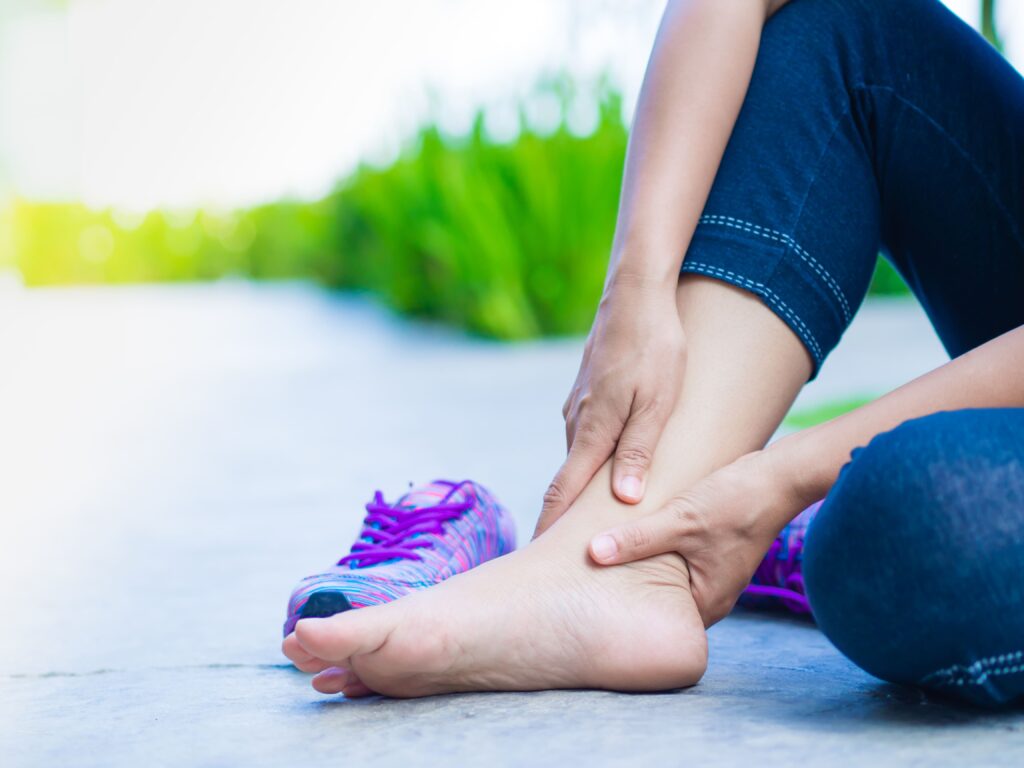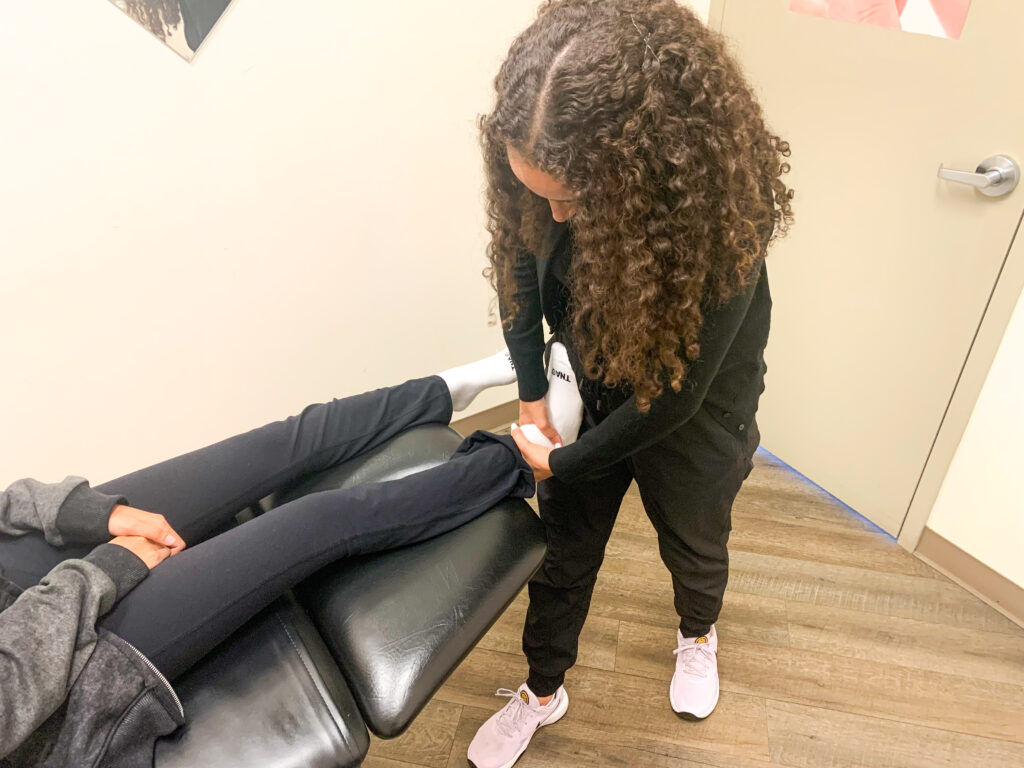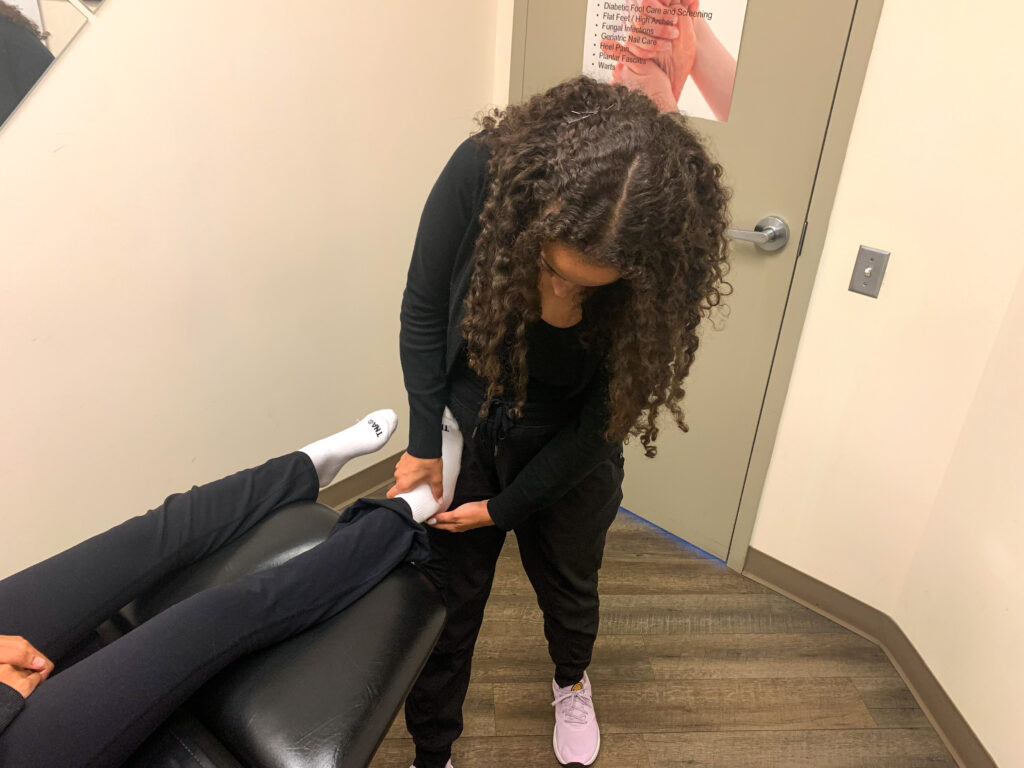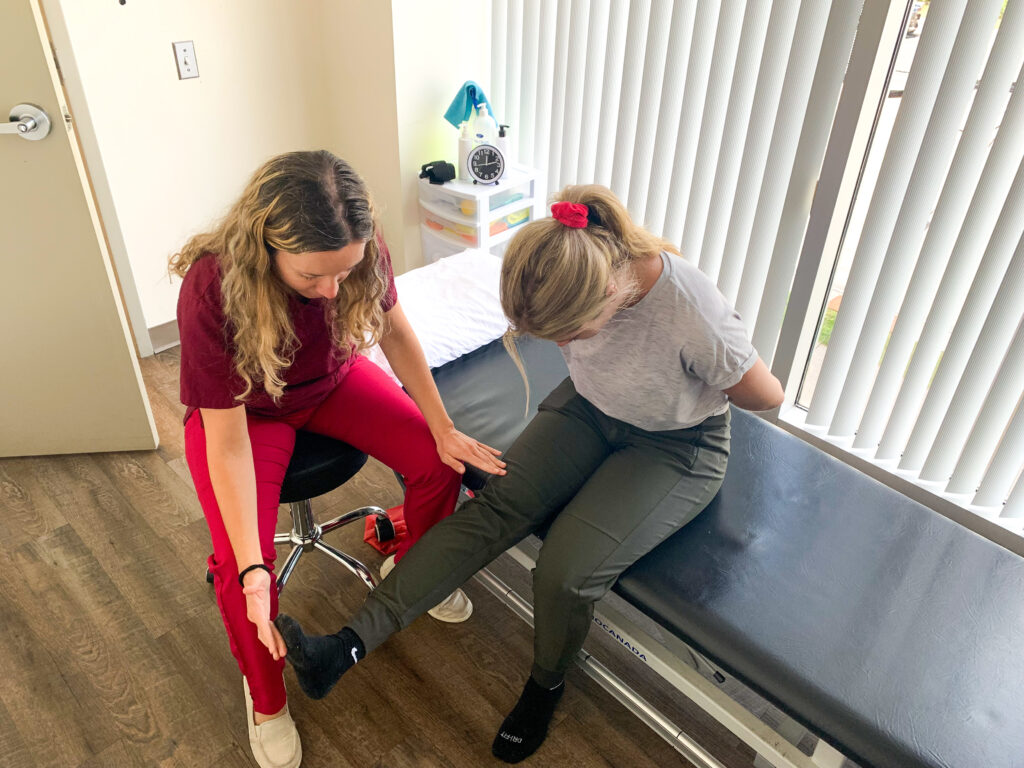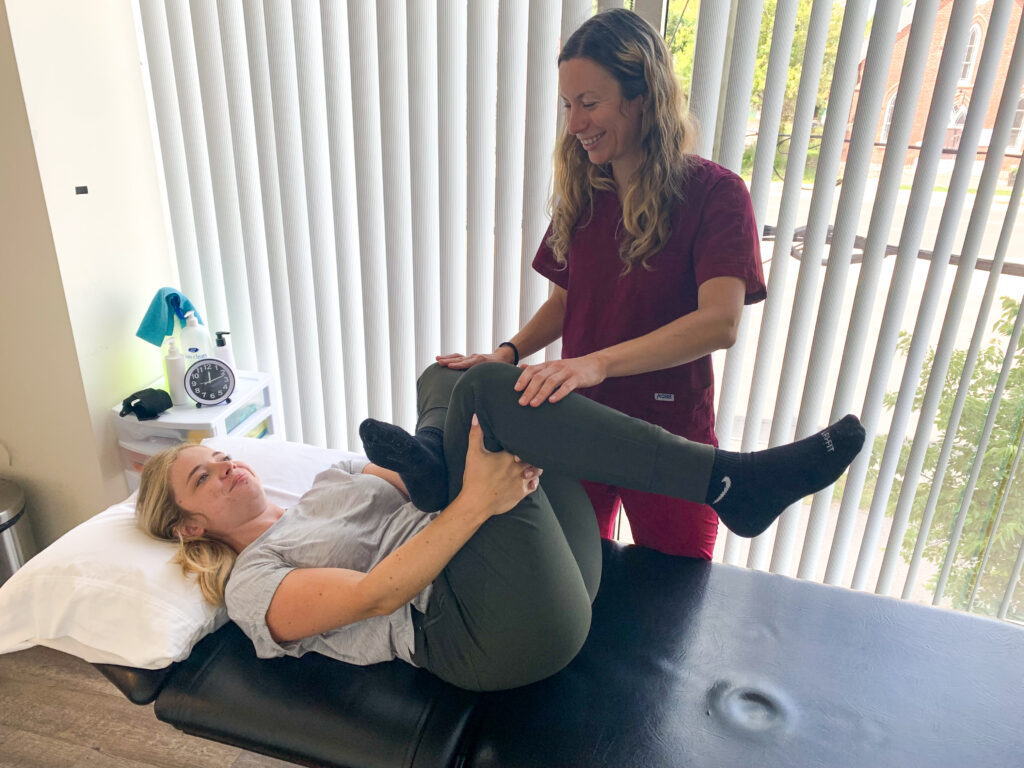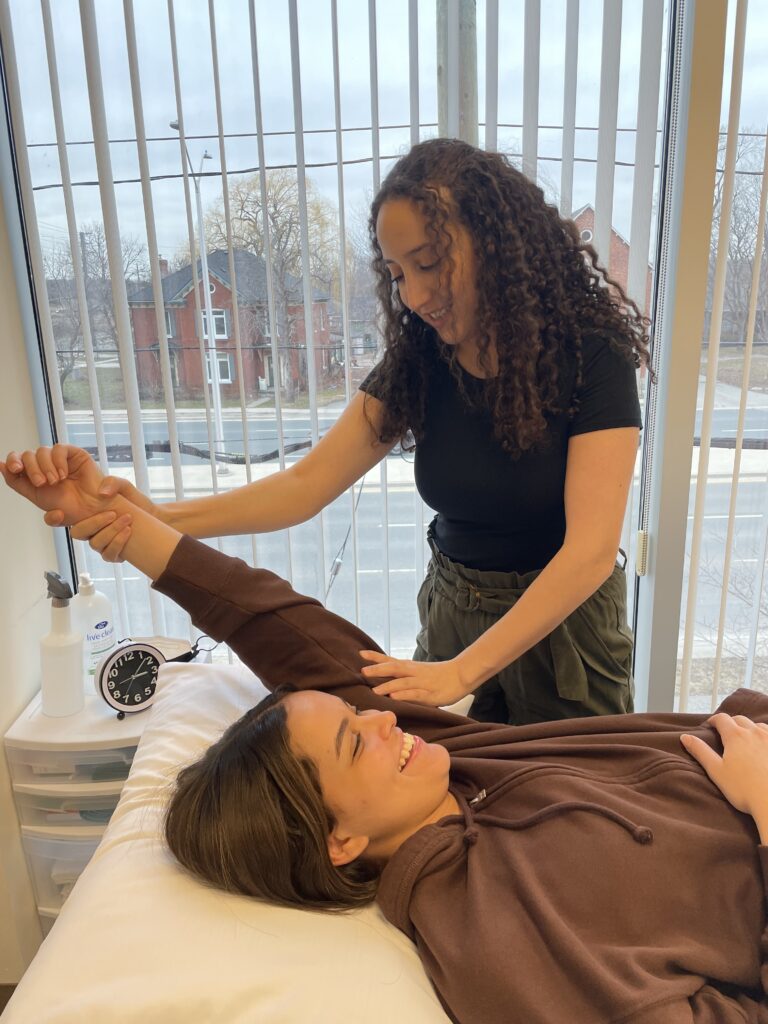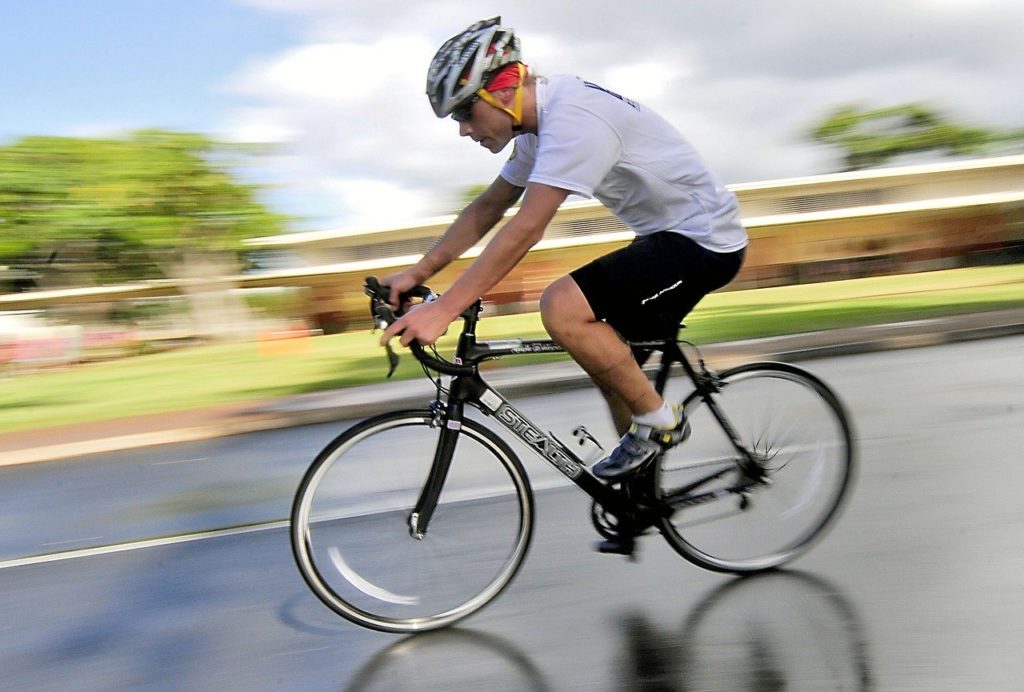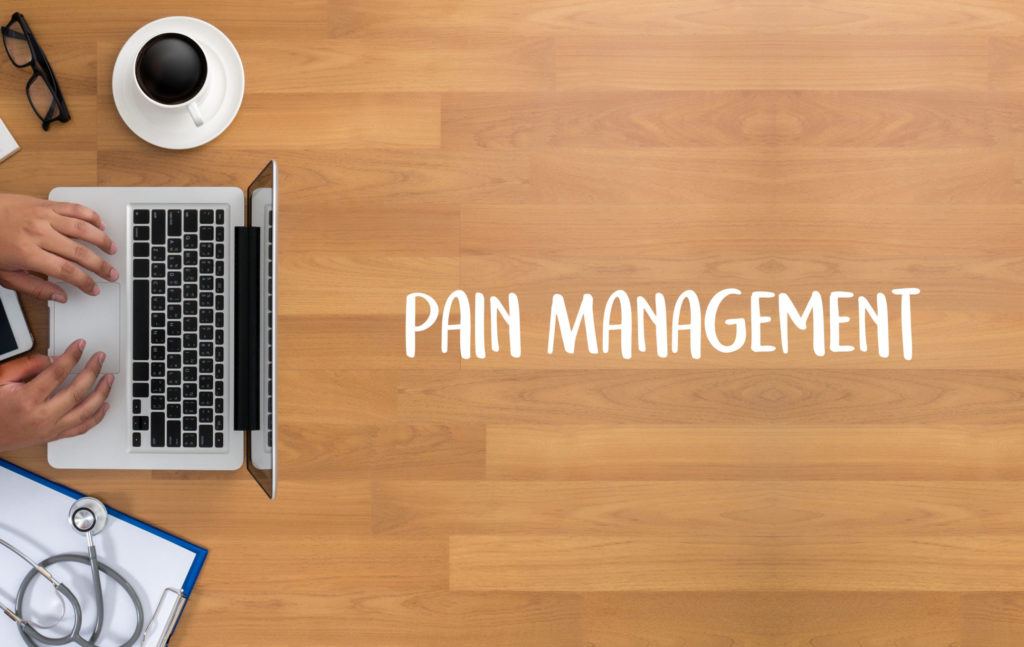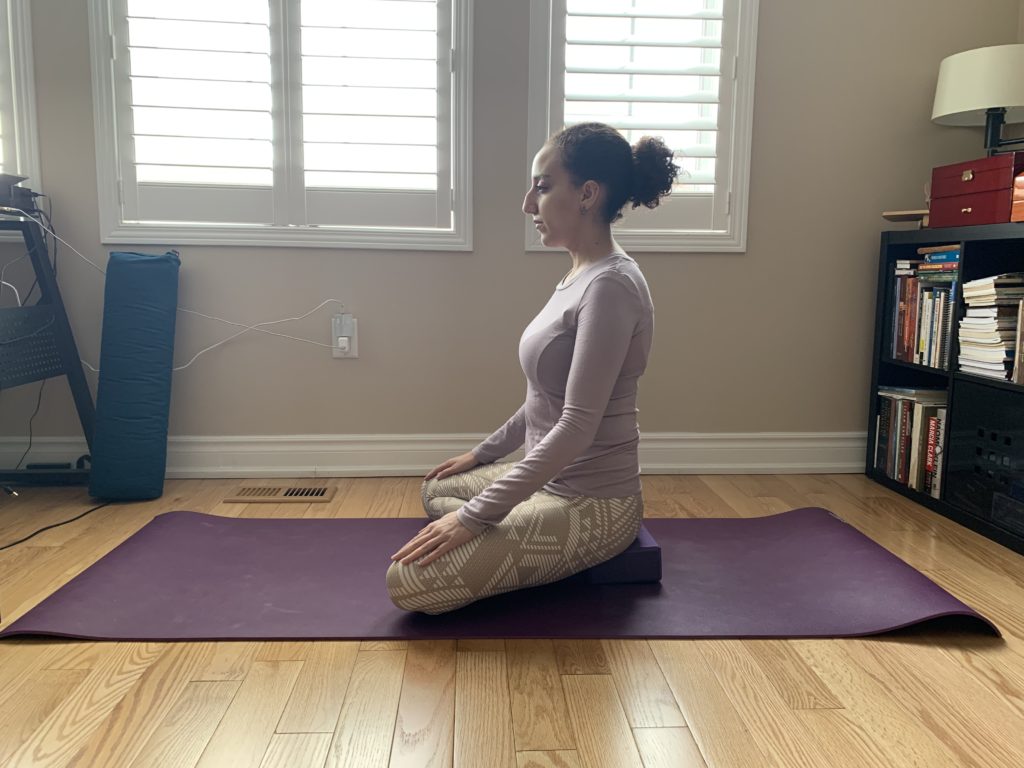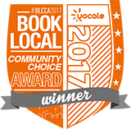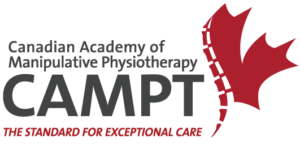
Maybe you are healing from a fractured wrist and have it in a cast.
Maybe you are recovering from knee surgery and have a brace on.
Maybe you have a torn Achilles and have a boot on.
Maybe you dislocated your shoulder and have it in a sling.
Or maybe you had to be on bedrest for a significant length of time due to other health issues.
The point is… you as a whole, or a certain body part, were immobilized.
Interestingly, when you get referred to physio after the brace or cast or sling come off, we are not really treating the original injury at that point. We are treating the secondary effects of it, along with the effects from the immobilization!
So What Are Those Secondary Effects?
When you’ve had a fracture, or a dislocation, or a ligament / tendon / muscle tear, what you can expect is:
- Decreased range of motion
- Decreased strength
- Pain with use
- Swelling
- Overall lack of function i.e. you’re not able to do all the things you were doing before the injury
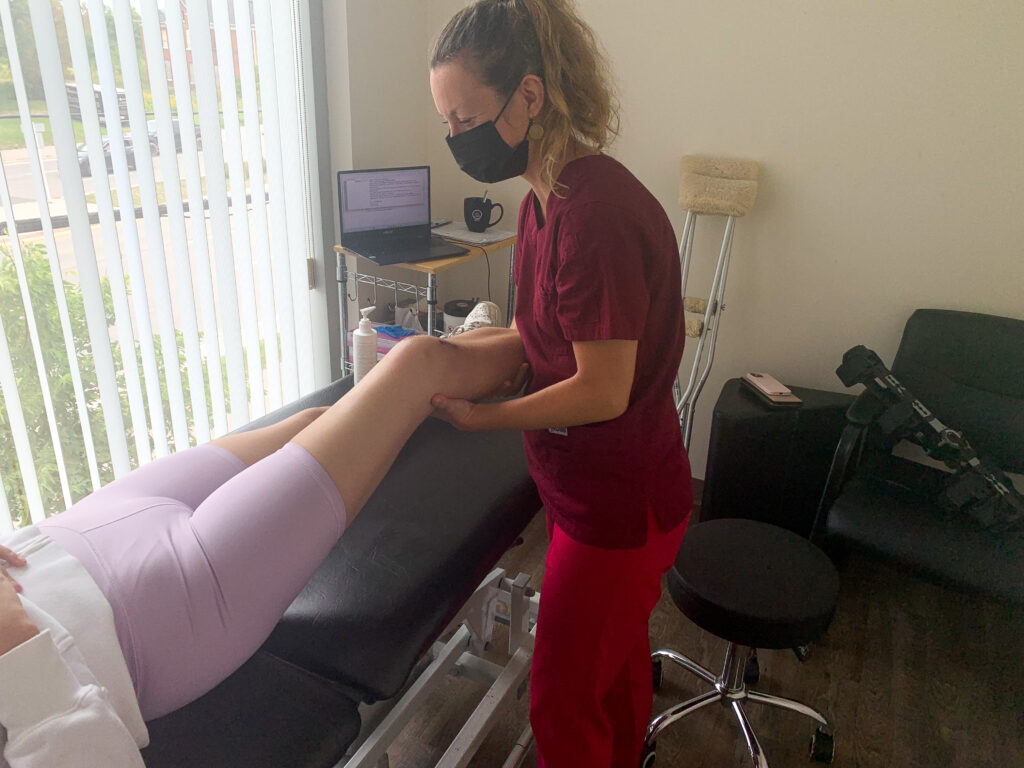
Similarly, when a body part is immobilized, these issues get compounded.
Let’s take a fractured ankle for example. Maybe it didn’t need surgery but you were still put in a cast or a splint for 4-8 weeks:
- When the muscles of that ankle and foot aren’t been used for that length of time, they begin to atrophy – you lose muscle mass and therefore, muscle strength. Your body has a strict “use it or lose it” policy and it’s not going to put in energy into maintaining something that’s not being used. Not to mention, it now has to redirect energy and resources into healing the fracture.
- Without movement in the ankle joint, the joint gets stiffer and the muscles around it get tighter. Not to mention the swelling that’s been pooling will also block additional movement. Which means, the range of motion and flexibility of your ankle once the cast or splint come off, will be very minimal and likely have some pain.
- Along with trying to move it, putting weight on it will likely also cause the ankle some pain. Part of that is due to the muscle weakness, swelling, and decreased range of motion. The presence of these adds to the pain of an area that’s already recovering from injury and is still sensitive.
- And as you can imagine… if you have limited range of motion, muscle weakness, and pain… your walking, standing, and balance will be affected. Not to mention your ability to do things that require more exertion such as climbing stairs, squatting, lifting heavy objects, running, jumping, dancing, etc.
- Lastly, let’s not forget about the rest of you! If you’ve had a fractured ankle, you aren’t using the whole leg very much either, so all of those muscles will be a bit weaker. On the contrary, the other leg might be tired from overcompensating, and maybe even getting a bit sore. Plus, you’re less active than you were before the injury, so you might also lose some cardiovascular fitness.
Cue Physiotherapy! We are here to gradually get you back on track with all of the above and as much as possible back to normal!
Depending on the injury, we follow protocols for restoring range of motion and strength, as well as reintroducing day-to-day, work, or recreational activities back into your routine.
Oh, and what about when you’ve had to be on bedrest?
Although no specific body part was immobilized, depending on how long bedrest was necessary for, there will likely be some general muscle atrophy.
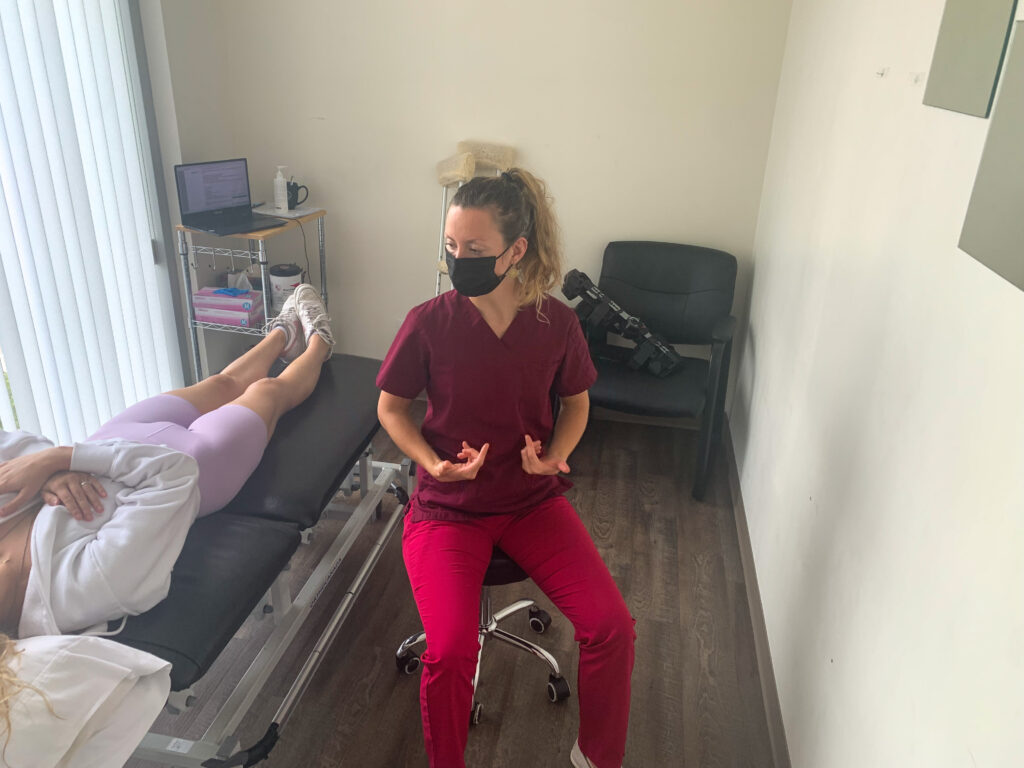
It’s due to the same “use it or lose it” principle.
And it’s not just your muscles… Other impacts of prolonged bedrest include:
- Backache from the atrophy of core and postural muscles
- An overall decrease of cardiovascular fitness and respiratory system efficiency
- This leads to less energy and more fatigue once you start moving and trying to be more active
- Increased risk of falls due to weakness and decreased balance
- Increased risk for fracture because bones also get weaker without weight-bearing activities (i.e. walking). Just like muscle mass is maintained with use, bone strength is maintained with use.
- Tendons and ligaments also lose some of their natural properties that allow them to do their jobs effectively. As a result, when you start being more active following bedrest or immobilization, they are now more prone to injury.
You may experience some of these effects in as little as 3-5 days of bedrest.
The good news is, bedrest is not prescribed as often as it used to be. That’s because research has shown that in most cases, there are minimal to no benefits. We are now also much more aware of the detriments it can cause.
However, when it is necessary, depending how long you were on bedrest for, it might be worth doing a few physio sessions to get you back into activity safely. Book here for an assessment today!

